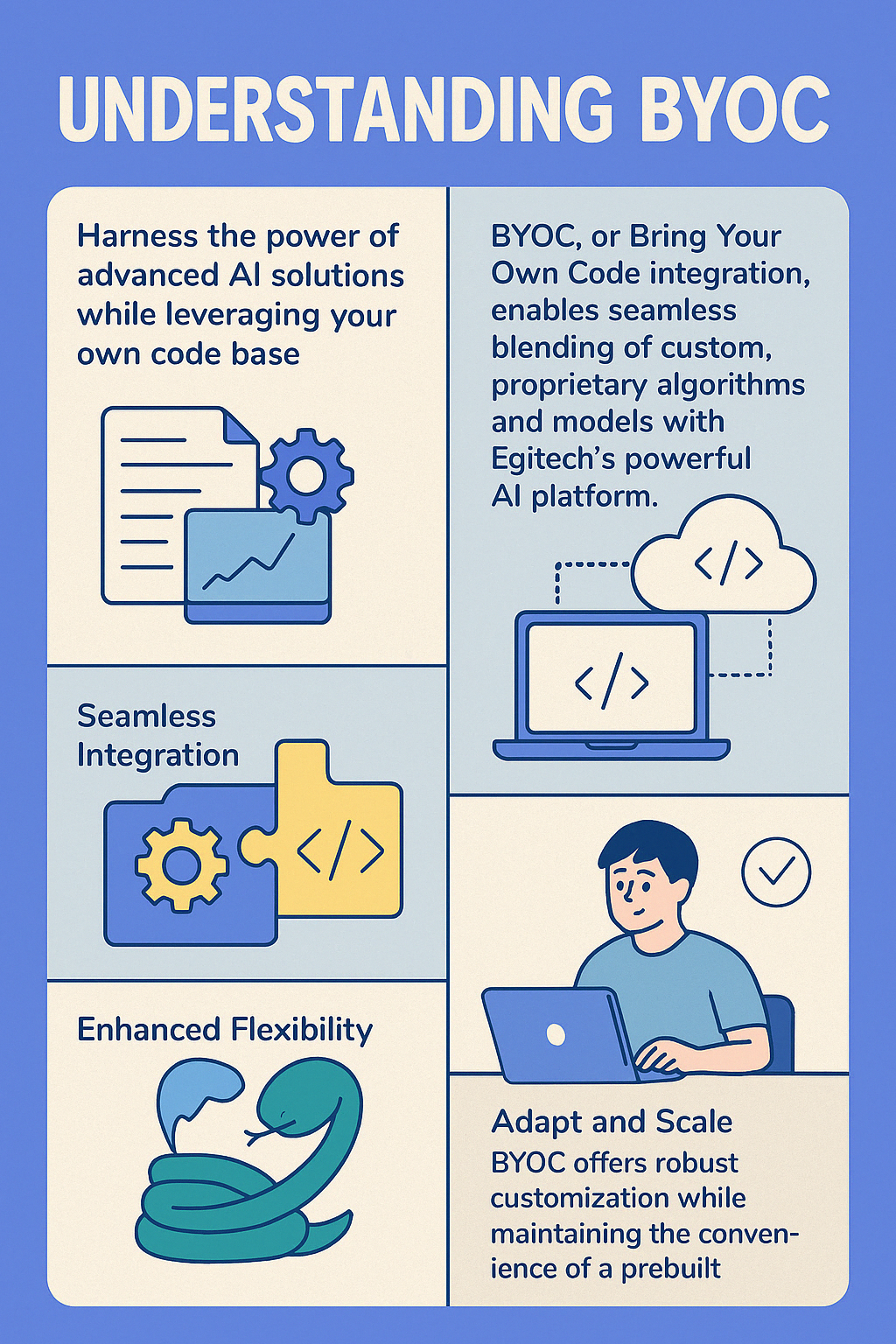SaaS vs BYOC: Which One Fits Your Business Better in 2025?
Deciding between SaaS vs BYOC in 2025 impacts your business’s efficiency and costs. Egitech breaks down their differences to guide your choice. This comparison helps you align with your goals.
What Are SaaS and BYOC?
Software as a Service (SaaS) delivers cloud-based applications managed by providers, requiring no local installation. You pay a subscription for tools like Slack or Salesforce, with updates handled automatically. In 2025, SaaS’s ease drives its popularity among startups.
Build Your Own Cloud (BYOC) lets you create a custom cloud infrastructure, offering full control over data and performance. It demands significant investment in servers and IT expertise, ideal for enterprises like fintech. BYOC’s flexibility suits complex needs but requires ongoing maintenance.
💡 Insight: SaaS’s market is set to hit $374 billion by 2028, while BYOC grows in regulated industries.
Key Differences Between SaaS and BYOC
SaaS and BYOC serve distinct needs, shaping costs, control, and scalability. SaaS offers a ready-to-use model with minimal setup, perfect for lean teams. BYOC, however, requires building your system for tailored solutions.
Cost structures vary widely. SaaS uses predictable subscriptions, while BYOC demands upfront hardware and staffing expenses. Scalability also differs—SaaS adjusts instantly, but BYOC needs planned capacity.
| Factor | SaaS | BYOC |
|---|---|---|
| Cost | Subscription-based, $10–$200/user/month | $50,000+ upfront, plus maintenance |
| Control | Limited, provider-managed | Full, custom-built |
| Scalability | Automatic, user-based | Planned, infrastructure-dependent |
🔍 Tip: Budget-conscious? SaaS spreads costs; BYOC saves long-term for heavy users.
Cost Breakdown
SaaS subscriptions range from $10 to $200 per user monthly in 2025, averaging $6,000 yearly for a 50-user team. Add-ons like extra storage can inflate costs unexpectedly. Smaller firms benefit from its predictability.
BYOC starts at $50,000 for basic setups on AWS or Azure, with $20,000+ in annual maintenance. Staffing adds further expenses, requiring skilled IT teams. Large enterprises may see savings over SaaS after 3–5 years.
Scalability Compared
SaaS scales effortlessly, adjusting to user spikes like e-commerce surges. Providers ensure uptime, sparing you technical headaches. This suits businesses with fluctuating needs.
BYOC scalability relies on your design. Overbuild risks wasted resources; underbuild causes bottlenecks. It’s best for stable, high-volume workloads like AI processing.
How to Choose the Right Model
Picking between SaaS vs BYOC hinges on your priorities—speed or control. SaaS fits startups needing quick tools without IT overhead. BYOC serves enterprises with unique workflows or compliance demands.
Evaluate resources and goals. Limited budgets favor SaaS’s low entry cost. Long-term plans with heavy customization lean toward BYOC’s flexibility.
| Business Type | Best Fit | Why |
|---|---|---|
| Startup/SMB | SaaS | Low cost, fast setup |
| Enterprise | BYOC | Custom control, compliance |
| Hybrid Needs | Both | Balance ease and power |

Questions to Ask
What’s your budget? SaaS avoids upfront costs, while BYOC demands investment. Can you afford downtime? BYOC risks outages without expertise.
Consider compliance needs. Healthcare or finance may require BYOC’s data control. Retail or marketing thrives on SaaS’s speed.
Trends in 2025
Hybrid models blending SaaS and BYOC are rising, with 60% of firms adopting them by 2026. SaaS dominates SMBs for simplicity. BYOC grows in AI-driven sectors needing low latency.
Edge computing favors BYOC for performance. SaaS providers add AI features, narrowing customization gaps. Choose based on your industry’s direction.
The SaaS vs BYOC choice shapes your business’s future. SaaS offers speed for lean teams; BYOC gives control for complex needs. Align your pick with budget and growth plans.
Hybrid options in 2025 let you mix both for flexibility. Egitech’s cloud solutions can guide your strategy. Act now to stay competitive.
🚀 Key Takeaway: SaaS is simple and fast; BYOC maximizes control. Match your choice to your resources.